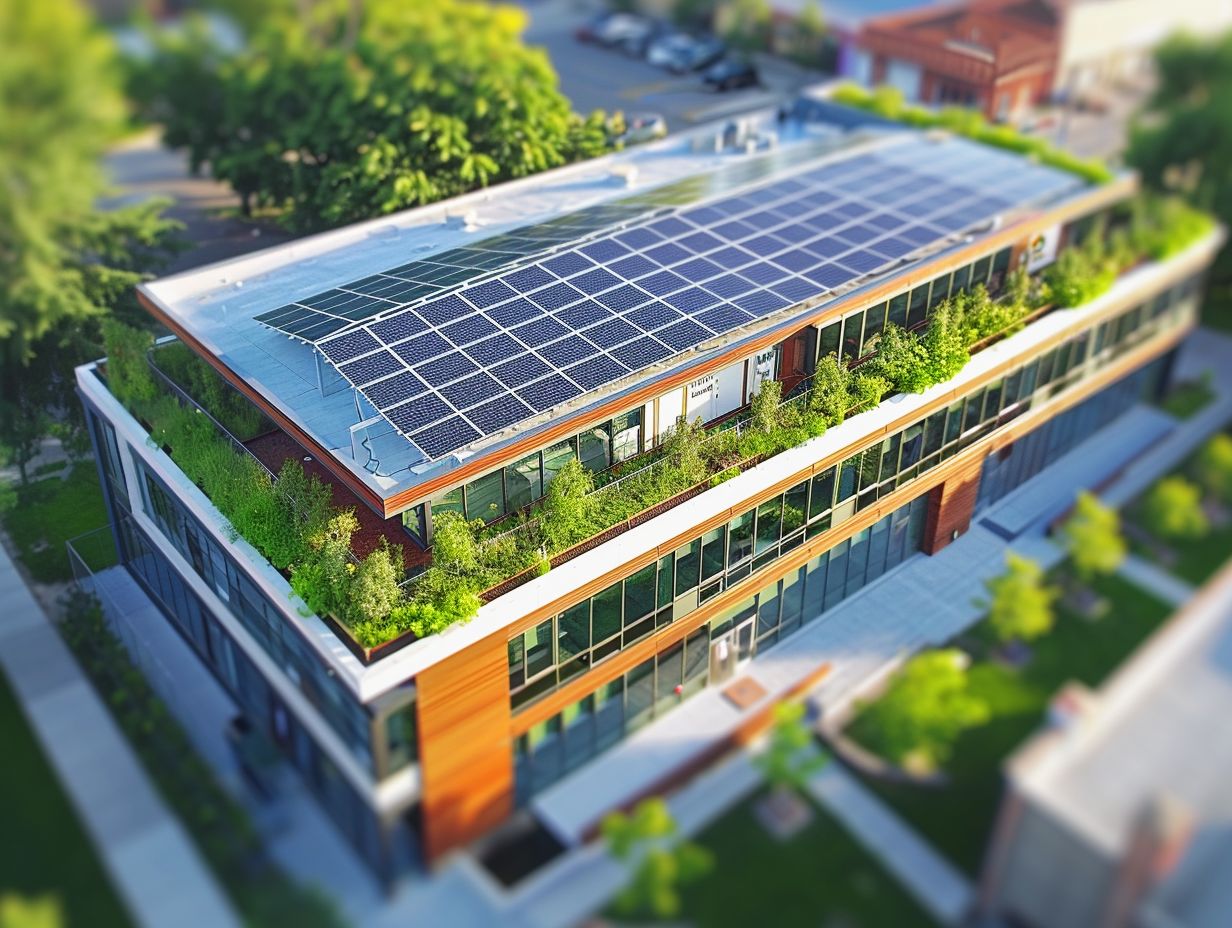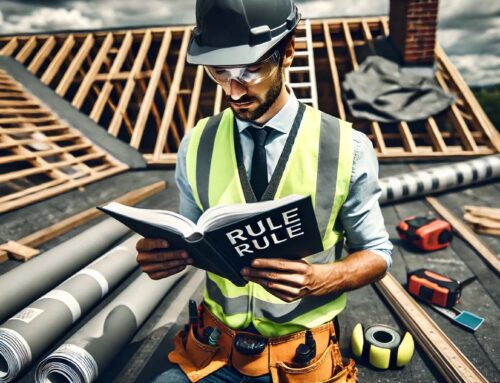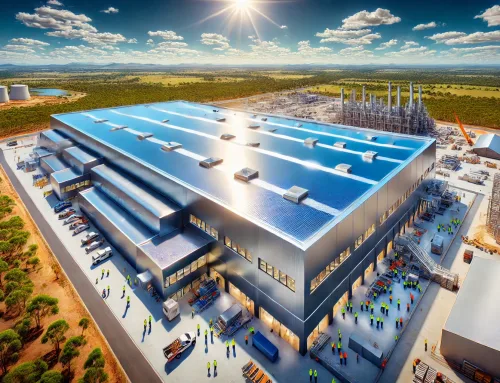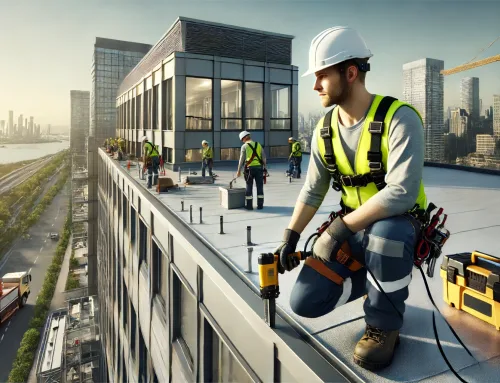If you are seeking to create a positive environmental impact while enhancing your business prospects, consider the eco-friendly roofing options available in Brisbane. These sustainable solutions can contribute to a reduction in your carbon footprint and offer long-term cost savings.
One may consider investigating various types of eco-friendly commercial roofing, including green roofs, solar panel roofing, and reflective roofing. It is advisable to delve into the associated costs and maintenance requirements. Additionally, a careful evaluation is necessary to select the most suitable option for your business.
Further details regarding the installation procedures and timelines for eco-friendly roofing in Brisbane will be forthcoming.
The Importance of Eco-Friendly Roofing
In the contemporary era that prioritises environmental consciousness, the adoption of eco-friendly roofing has emerged as a crucial element for commercial properties. These sustainable roofing solutions not only serve to benefit the environment but additionally bolster energy efficiency and support the attainment of green building standards. The integration of eco-friendly roofing practices holds the potential to notably diminish the environmental footprint of commercial structures, thereby fostering sustainable development and the preservation of energy resources.
Benefits for the Environment and Your Business
The adoption of environmentally friendly roofing solutions has the potential to yield significant energy savings for your business whilst simultaneously advocating for sustainable practices. Through the utilisation of sustainable materials and innovative design, eco-friendly roofs have the capacity to effectively mitigate heat absorption, subsequently reducing cooling expenses during warmer seasons. Additionally, these roofs can enhance insulation, thereby minimising the necessity for excessive heating in colder climates.
Furthermore, eco-friendly roofs not only benefit the environment by diminishing carbon footprint but also contribute to the overall energy efficiency of commercial establishments, resulting in substantial cost reductions over an extended period. The embracement of green business practices through sustainable roofing solutions proves advantageous not only for environmental preservation but also for yielding enduring financial benefits for businesses.
Types of Eco-Friendly Commercial Roofing
Various environmentally friendly commercial roofing options are at your disposal, each customisable to suit the individual requirements of your business. These options provide distinct advantages in terms of sustainability and energy efficiency.
Green Roofs
Green roofs, also referred to as rooftop gardens, represent a widely embraced eco-friendly roofing alternative characterized by the integration of vegetation on top of commercial structures, offering a plethora of environmental and financial advantages.
These innovative roofing structures present a sustainable remedy to challenges posed by urbanization as they leverage underutilised spaces to establish verdant sanctuaries. By incorporating an array of plant species, green roofs play a pivotal role in mitigating the urban heat island effect, lessening building energy consumption through natural insulation provision, and counteracting stormwater runoff via absorption.
The design of green roofs encompasses multiple variations, ranging from extensive options that feature lighter vegetation requiring minimal upkeep to intensive alternatives that showcase a diverse selection of plants and additional amenities such as walkways and seating areas. Executing these designs involves the careful selection of suitable plants, installation of a waterproof membrane, and the establishment of well-structured irrigation and drainage systems to foster the growth and sustenance of plant life.
Solar Panel Roofing
Solar panel roofing technology seamlessly incorporates renewable energy solutions into the roofing system of your commercial building, effectively utilising solar power to mitigate energy expenses and advocate for sustainability. Utilising solar panels on your roofing structure facilitates the efficient conversion of sunlight into electricity, thereby reducing reliance on conventional energy sources.
This not only leads to reduced utility costs but also aids in diminishing your carbon footprint, thereby contributing to the development of a more environmentally-friendly ecosystem. Moreover, solar panel roofing systems necessitate minimal upkeep and boast extended lifespans, ensuring consistent energy savings over an extended duration.
Embracing sustainable energy solutions such as solar panels has the potential to revolutionise your building into an energy-efficient and environmentally-conscious establishment, aligning seamlessly with sustainable building principles.
Reflective Roofing
Reflective roofing, also referred to as cool roofing, is specifically engineered to reflect a higher percentage of sunlight and absorb less heat, thus serving as an energy-efficient alternative that aids in regulating building temperatures and diminishing cooling expenses.
This roofing system proves to be particularly advantageous in urban settings where heat island effects can exert a significant influence on the immediate surroundings. By redirecting sunlight away from buildings, cool roofing plays a pivotal role in alleviating the heat absorption within urban areas, thereby contributing to cooler ambient temperatures.
The resultant decrease in energy consumption for cooling operations translates into reduced electricity costs for building proprietors, thereby augmenting both economic efficiencies and environmental sustainability. Embracing cool roofing technologies aligns with the prevailing trend towards environmentally-conscious building methodologies, thereby endorsing energy conservation practices and the reduction of carbon footprints.
Cost and Maintenance Considerations
It is imperative for businesses striving to achieve short-term affordability and long-term energy savings, whilst upholding sustainable roofing systems, to comprehend the cost and maintenance considerations associated with eco-friendly commercial roofing.
Initial Investment and Long-Term Savings
Although the initial cost of eco-friendly roofing systems may exceed that of traditional alternatives, the subsequent energy savings and reduction in carbon footprint justify the investment. Eco-friendly roofs generally boast an extended lifespan and require less maintenance in comparison to conventional roofing materials.
Consequently, homeowners can expect reduced expenses for repairs and replacements, thereby enhancing the financial advantages associated with such systems. Numerous governmental bodies and local authorities provide incentives or rebates for the installation of eco-friendly roofing, thereby offsetting some of the initial financial outlay.
It is important to note that the financial benefits of eco-friendly roofing go beyond the initial expenditure, offering significant long-term savings and environmental benefits.
Regular Maintenance and Repairs
Routine maintenance and timely repairs are crucial to ensure the durability and effectiveness of eco-friendly roofing systems, thereby contributing to sustainable roof management and environmentally conscious building practices.
By proactively addressing concerns such as leaks, damaged tiles, or debris build-up, property owners can avert significant damage and prolong the lifespan of their eco-friendly roofs. Regular inspections are necessary to detect any potential issues at an early stage. It is also important to clean gutters and ensure proper drainage to prevent water accumulation, which can lead to roof degradation.
Proper maintenance of sustainable roofing systems not only guarantees their functionality but also advocates for environmentally conscious building management by diminishing environmental impact and promoting energy efficiency.
Choosing the Right Eco-Friendly Roofing Option
Selecting the appropriate environmentally friendly roofing solution for your commercial property necessitates a comprehensive evaluation of various factors to guarantee compliance with your environmental goals and operational needs, thereby enabling a wise eco-conscious investment.
Factors to Consider
When considering an environmentally-friendly roofing option, it is important to take into account factors such as the durability and recyclability of roofing materials, energy efficiency ratings, and the overall sustainable design of the roof.
Opting for sustainable roofing materials not only benefits the environment but also contributes to the long-term durability of the roof. By choosing materials such as recycled metal, wood shakes, or solar tiles, individuals can decrease the environmental impact of their homes while ensuring a robust roof structure.
Prioritising high energy efficiency ratings in the roofing system can result in lower energy consumption, reduced utility bills, and a diminished carbon footprint. This focus on energy efficiency not only promotes a more environmentally conscious lifestyle but also enhances the overall sustainability of the building.
Installation Process and Timeline
The installation process and timeline for eco-friendly roofing may vary based on the selected type of roofing system. Typically, it entails meticulous planning and coordination to ensure a smooth and sustainable roofing installation.
Steps and Timeframe for Installation
The process and timeline for the installation of environmentally friendly roofing systems involve several key steps, including an initial assessment, material selection, and implementation. Emphasis is placed on following sustainable roofing practices and utilising eco-friendly installation techniques.
During the assessment phase, it is vital to conduct a thorough evaluation of the building’s structural integrity to determine its ability to support a green roof. Following confirmation of this capacity, the subsequent step is to choose suitable materials, such as recycled insulation, sustainable waterproofing membranes, and vegetation. The implementation phase encompasses the preparation of the roof surface, the installation of insulation and waterproofing layers, and the planting of vegetation.
The use of green roof installation methods not only serves to decrease energy consumption but also enhances air quality and reduces stormwater runoff. Consequently, opting for environmentally responsible roofing practices can prove to be a prudent choice for roofing projects.
Frequently Asked Questions
What are some eco-friendly commercial roofing options available in Brisbane?
Some eco-friendly commercial roofing options available in Brisbane include green roofs, solar roofs, cool roofs, and recycled roofing materials.
What is a green roof and what are its benefits?
A green roof is a roofing system that has vegetation and plants growing on it. It helps reduce energy costs, improves air quality, and reduces stormwater runoff.
How does a solar roof work and what are its advantages?
A solar roof consists of solar panels installed on the roof to generate electricity. It helps reduce energy bills and lowers carbon emissions.
What is a cool roof and how does it benefit the environment?
A cool roof is a roofing system that reflects sunlight and heat instead of absorbing it. This helps reduce the urban heat island effect and lowers energy consumption.
Are there any regulations or incentives for using eco-friendly commercial roofing options in Brisbane?
Yes, there are regulations in place for green building standards and incentives such as rebates and tax credits for using eco-friendly roofing options in Brisbane.
What are some examples of recycled roofing materials that can be used for commercial roofs?
Examples of recycled roofing materials include shingles made from recycled plastic or rubber, metal roofs made from recycled metal, and tiles made from recycled glass or clay.






